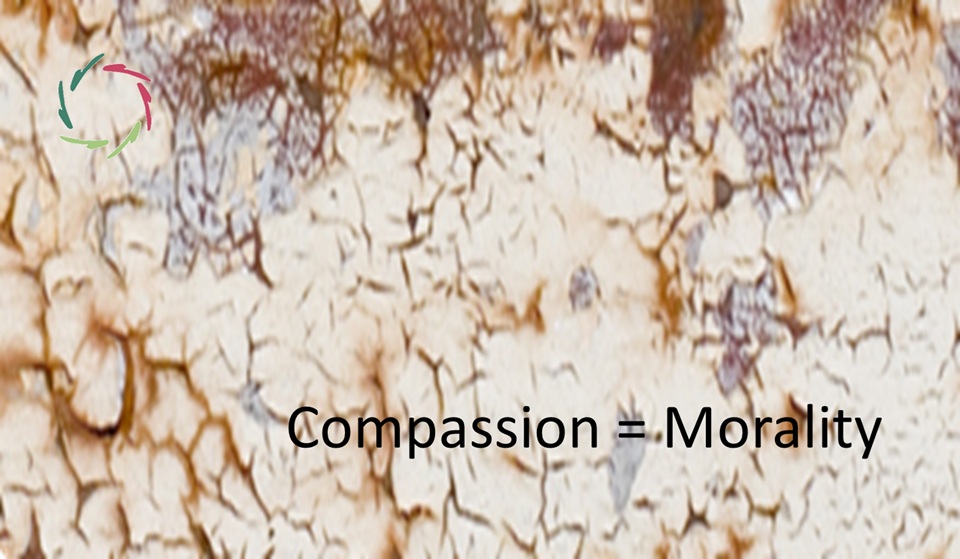Beyond Sadness

‘Sadness’ is not fixed, impersonal and ‘real’ as is the computer on which I am typing this text. Instead, it is personal, social and ‘real’ in a much more interesting way.
As any other emotion: surprise, fear, disgust…
We live with emotions. We talk about emotions. We see emotions in other people. We feel them inside. We remember those of yesterday and may look forward to those of tomorrow.
Even so, emotions are no objects.
They are not even like objects.
Take a $5 banknote. An emotion is like the value of that note, not like the note itself. In the end, what do you trade the note for? Eventually: for its emotional value, the value that you emotionally attach to it, be this through buying something you ‘want’ or through giving it away to someone you ‘care for.’ [see: “From deep meaning to post-capitalism”] Always, in the end, value is emotion, emotion is value.
Emotion is not a thing. It is not even like a thing.
Moreover, an emotion – like sadness or any other – is quite different every time. Meaning: you cannot feel the same sadness twice. Nor can someone else feel exactly the same sadness as you. So:
how big is the difference between sadness and sadness?
It turns out that it is very big. Diverse mental constellations can be called ‘sadness’ by different people, or even the same person in different circumstances.
This way, ‘sadness’ is not what it used to be, nor what it will be, nor even what you (nor I myself) normally think it is.
This is in the usual sense counter-cultural. It is also counter-intuitive. Rest assured: to me as well as to you. Yet modern science provides more than enough proof towards the view that emotions are by far not clear-cut. Every single kind of emotion is very diverse in every respect: how it is felt, how it shows, how it influences health, and also – intriguingly – to a huge degree
brain-wise.
Looking in the brain, emotions do not have fingerprints.
Towards any individual emotion, many brain parts work in sync. Sometimes one collection of brain parts is involved, sometimes another. There is no mandatory overlap between individuals. Not even, for instance, and for the connoisseur, regarding the amygdalae in case of fear. One can very clearly feel fear without them. This is pure science.
Diversity is the norm. The ‘norm’ that we habitually live by, is but a normalized assumption. Which is OK. This doesn’t demean emotions at all. Please don’t ever let it do so!
This makes emotions much more interesting.
People are not ‘one kind of cake’. Really getting to know someone is like discovering a brave new world. It takes courage to be open and discover it.
The alternative is re-discovering your own projections. This may be comfortable but not very brave and, if you ask me, not interesting. I do not like to project much, not even upon myself. Too many projections close any door without knowing what’s behind.
So, in view of this diversity, can one feel another’s sadness? Can one be empathic?
Sure. However, it takes a lot more than simply recognizing some conceptualized idea of what sadness should be. There is a huge gulf between ‘is’ and ‘should be.’ Any sadness is more personal than objectifiable.
To really be empathic, to really see another person’s sadness, you need to accept that every time again, what you see is unpredictable. If you see the same ‘sadness’ for the nth time, you are looking at a chimera. Empathy needs openness.
Meditation helps
to open emotional doors. It’s almost Huxley-like, isn’t it… If you think so, I think you think pretty correctly, with disclaimer. The ‘doors of perception’ (see Internet) lie in perceiving that, for instance, emotions are not so much fingerprinted in any straightforward way, as they are you and only truly you, deep inside yourself.
In any meditation which is worthy of that name and therefore is mainly opening, one encounters oneself, including one’s emotions much more as they are. Thus, also, an immense area of freedom. This brings responsibility, no guilt.
With a clear goal: being emotionally real.


